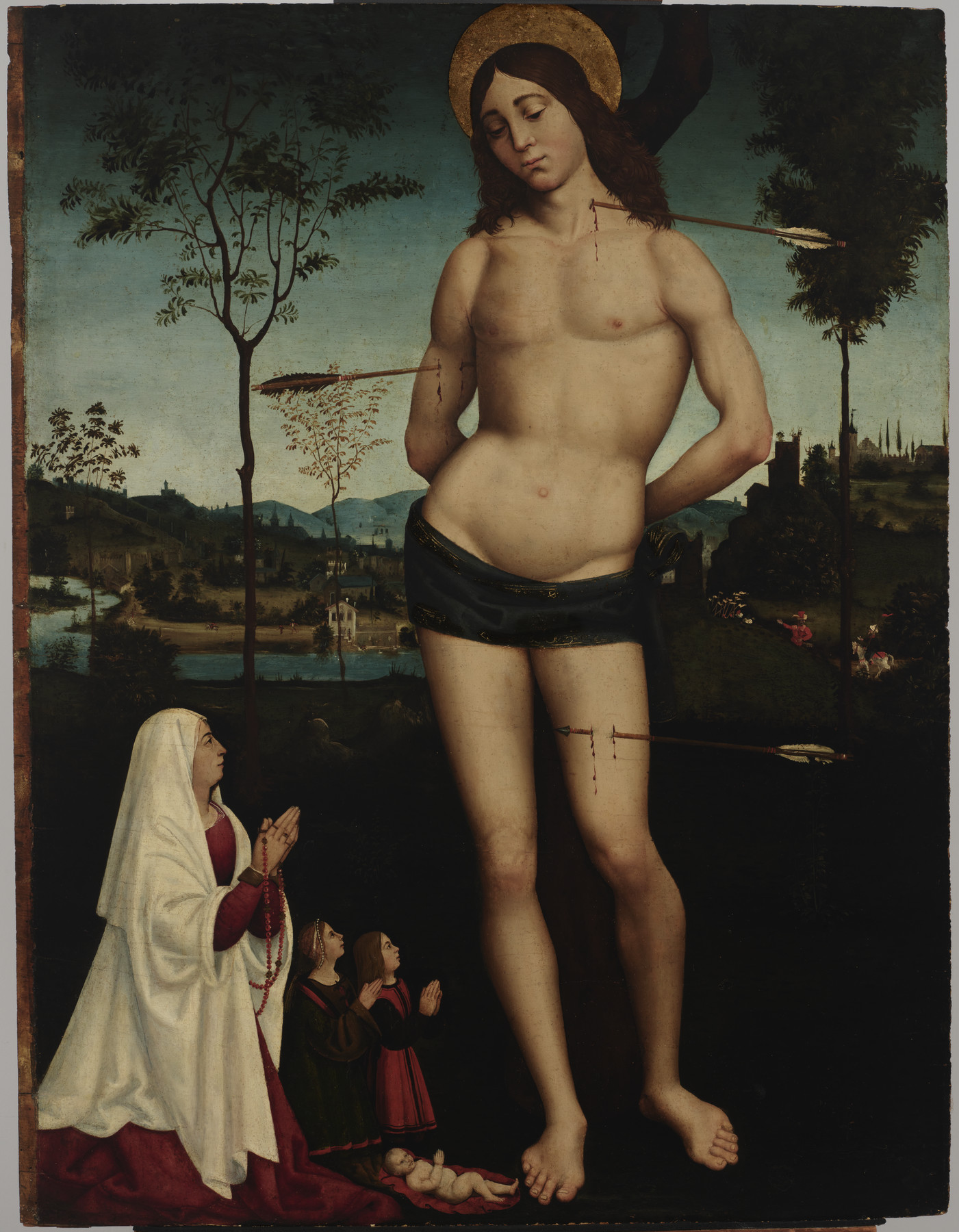Saint Sebastian
(Renaissance Europe )
Saint Sebastian was a Roman commander who, according to legend, was executed under Emperor Diocletian (284-305) for being a Christian. First, soldiers attempted to kill him by shooting him with arrows, but he miraculously survived. He was then beaten to death.
In Rimpacta's image, the soldiers depart in the background, thinking they have killed the saint. He is depicted in a beautiful landscape, perhaps to show us that, through his faith and sufferings, he has entered Paradise.
Sebastian was among the saints who were believed to protect people from the plague. The painting is probably an "ex-voto," an image commissioned in gratitude for protection against the disease and dedicated to the saint by the wealthy kneeling woman in the foreground, who has placed herself and her children under his protection.
Provenance
Provenance (from the French provenir, 'to come from/forth') is the chronology of the ownership, custody, or location of a historical object. Learn more about provenance at the Walters.
Don Marcello Massarenti Collection, Rome [date and mode of acquisition unknown]; Henry Walters, Baltimore, 1902, by purchase; Walters Art Museum, 1931, by bequest.
Conservation
| Date | Description | Narrative |
|---|---|---|
| 11/29/1943 | Treatment | coated; inpainted; loss compensation; surface cleaned; varnish removed or reduced |
Geographies
Italy, Bologna (Place of Origin)
Measurements
Painted surface H: 39 x W: 29 7/16 in. (99 x 74.7 cm); Panel H: 39 x W: 30 x D excluding cradle: 3/8 in. (99 x 76.2 x 1 cm)
Credit Line
Acquired by Henry Walters with the Massarenti Collection, 1902
Location in Museum
Accession Number
In libraries, galleries, museums, and archives, an accession number is a unique identifier assigned to each object in the collection.
In libraries, galleries, museums, and archives, an accession number is a unique identifier assigned to each object in the collection.
37.469




